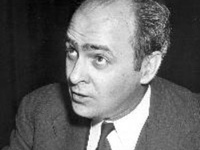A year after his investigation, Furry finally disclosed the extent of his associations with the Communist Party. He became involved, he said, in 1938, attending a series of informal discussion groups in Cambridge.
“Often, we would plow through a few pages of some ‘classic’ we were studying,” he told The Crimson in February 1954. “What I knew of [the Communist Party] years ago was limited to a small group. So far as this group was concerned, I believe that membershp in the Party at that time was quite consistent with being a loyal American.”
Furry said that in 1946 he noticed an anti-American trend in Party literature and by the following year had severed his ties with the group.
Despite this qualification, Furry’s past made him one of the most visible targets of the anti-communist crusade and Harvard a symbol of the supposed Red infiltration of American academia.
In 1956, the Corporation would investigate five more faculty members with possible communist ties.
But 1953 would go down as the height of the Red Scare at Harvard, when Washington tested academic freedom and the University rebelled.
The McCarthyist investigations—and the waves of suspicion that followed—set the tone for a generation that, politically active or not, could not escape the fear that spread all the way to the University’s hallowed halls.
“Politics and international relations were very to the forefront of what was going on daily at Harvard and in our class,” says Greeley. “It was not a quiet, dull time by any means.”
—Staff writer Nathan J. Heller can be reached at heller@fas.harvard.edu.
—Staff writer Jessica R. Rubin-Wills can be reached at rubinwil@fas.harvard.edu.









